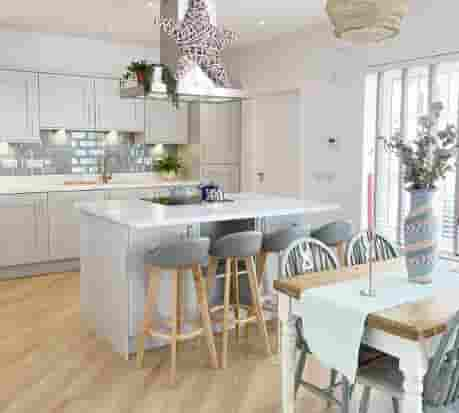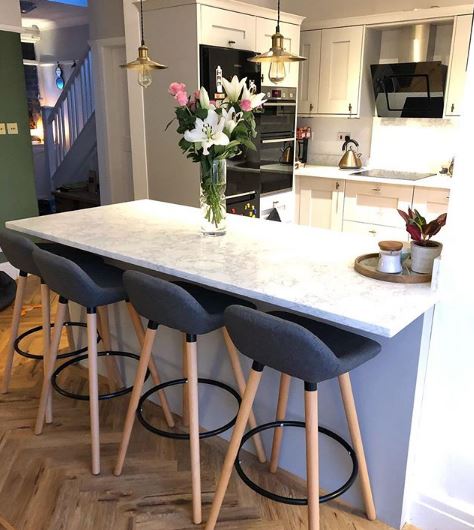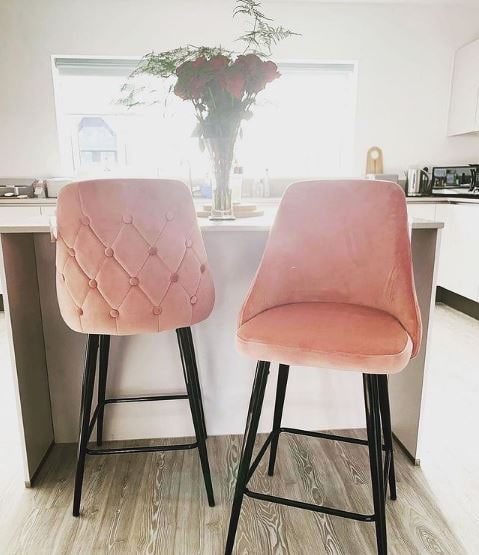
Scandinavian style has been a popular trend in households for the best part of a century now, with the style gaining in popularity over the past few years as minimalism has once again become one of the go-to styles.
However, there’s a lot people don’t know about this interesting design style. Even though the name gives away the fact that this style originated in Scandinavian countries, there are many features that make it unique.
In this week’s post, we’ll cover what Scandinavian style design is and how you can implement it when (re)designing your home.
So, if you want to learn more about this unique, interesting style, read on!
The Scandi-style furniture we offer
Before diving into what makes furniture and design so-called Scandinavian-style, we thought it would be worth letting you know that we stock a broad range of Scandi-style furniture, including Scandi-style dining chairs.
All our furniture comes in a range of different colours and models, and they all come with free UK delivery!
So, if you happen to like the style and you want to implement it into your home, we just wanted to let you know you’re in the right place.
Scandinavian style – the basics
Scandinavian design has been around since the first half of the twentieth century but only started gaining popularity outside of Scandinavian countries well into the second half of the century, after the trend was first introduced in the UK in the 1950s. It’s a minimalistic style that focuses on soft colours and clean lines, making it easy to maintain and keep clean while also giving your interior a calm look and feel.
Scandinavian design uses natural colours and materials like wood and features lots of house plants to add a natural touch to the interior. The combination of natural materials and soft colours gives it a unique look that suits most rooms. The style can even be combined with other similar styles to create an even more unique look, especially other minimalistic and modern styles.
Words used to describe Scandi-style design include warm, calming, natural, clean, minimalistic and inviting.
Scandinavian-style vs Scandi-style – is there a difference?
When looking for Scandinavian style furniture, you’ll often see it labelled as Scandi-style. Although this might confuse some people, it’s just an abbreviation of Scandinavian. They mean the same thing!
If you’re ever in search of Scandinavian style furniture or other items and you can’t find what you’re looking for, try searching for Scandi style instead of Scandinavian style. This may give you more of a selection to choose from.
Features of Scandinavian design
Scandi-style design is well known for its minimalism and uncluttered layout, but it encompasses much more than just limiting the amount of furniture you place in a room. Below, we’ll cover some of the most important features of Scandinavian design in more detail, making it easier for you to match the style perfectly.
Colours
Soft colours are the name of the game when designing a Scandi-style room. Light pinks, greens and blues are often paired with natural surfaces like wooden tables to create a calm aesthetic. These are often combined with light-coloured (often white) walls and limited decorative elements on the walls. This helps to make the most of the light in a space, making it the perfect style for rooms with only a limited amount of natural light.
Natural textures
Natural textures like wooden surfaces and green plants help to maintain a cosy look and feel. This helps to prevent Scandi-style design from looking too cold, which is a common issue with minimalistic styles. Wool and (fake) leather are other common materials, especially on cushions and furniture, helping to make certain spaces or areas look and feel a lot cosier than they otherwise would.
Furniture
Simple designs with clean lines and edges are characteristic of Scandinavian furniture, but this doesn’t mean it has to be boring. There are plenty of unique designs to be found in this category, many combining elements of post-modernism and industrial design with a touch of colour or a unique shape.
Scandi-style furniture is actually renowned for being highly innovative, often using new shapes, designs and patterns to create something unique – all while still fitting the minimalistic theme.
Compared to other styles
Although there are a number of styles that you can compare Scandi-style design with, it remains a distinct style that has clear features that set it apart from the rest.
It’s most often compared with other minimalist styles, including modern contemporary and industrial style designs. These all use furniture and colours sparingly and have a similar calm aesthetic to the Scandinavian style. It also has elements of rustic/farmhouse style design in it, especially when it comes to the detailing, with leather and wooden surfaces being common in both styles.
The main thing that sets Scandi-style design apart is how homely it feels. While industrial and modern styles can sometimes look relatively cold, the added natural colours and textures that Scandinavian style features make it look more welcoming.
Where did it originate from?
It should come as no surprise that Scandinavian style design originated in the Scandinavian countries. These countries include Denmark, Sweden, Norway, Iceland and Finland. The style first became popular in these countries at the beginning of the twentieth century. However, it wasn’t until the second half of the twentieth century that the style first started gaining popularity in the UK.
Although Scandinavian style is generally seen as a single design style in the UK, each country has its own style and elements. Although these are often very similar to the untrained eye, each country’s style is unique.
For example, Danish design is characterized by functionality and a more industrial look. Norwegian and Swedish styles are different, with a clean, minimalistic approach combined with natural materials.
That being said, they all have a large number of similarities too, the main one being minimalism.
Popularity
Scandinavian design first started gaining popularity in the UK in the second half of the twentieth century and is still going strong today. When they hear Scandinavian design, most people think of Ikea. However, although many of the products Ikea sells do fall into the category, there are many other brands that specialise in this style of furniture.
Minimalistic styles have been very popular over the last few decades and the same is true for Scandi-style design.
Scandinavian style design is a welcoming style that combines a modern, minimalistic look with natural colours, making it a great style for family homes. Hopefully, this post has helped you get a better understanding of this style, allowing you to implement it into your next room/home makeover.
Transform your space with our wide range of bar stools, luxury dining chairs and office chairs. Contact our team of experts to bring your vision to life. Use Lakeland Furniture to start to create a beautifully designed home.
 Chat with us on WhatsApp
Chat with us on WhatsApp





Comments